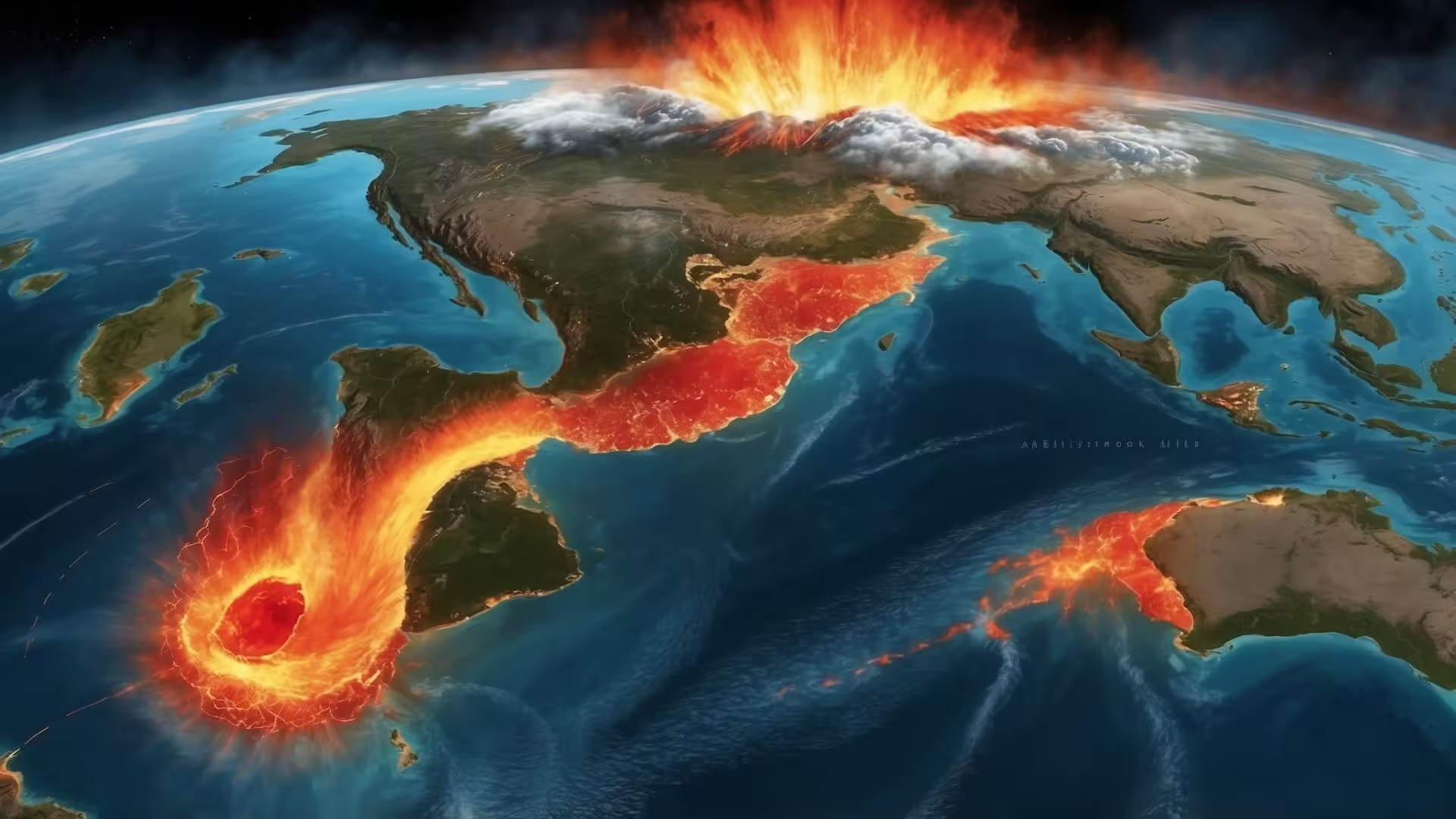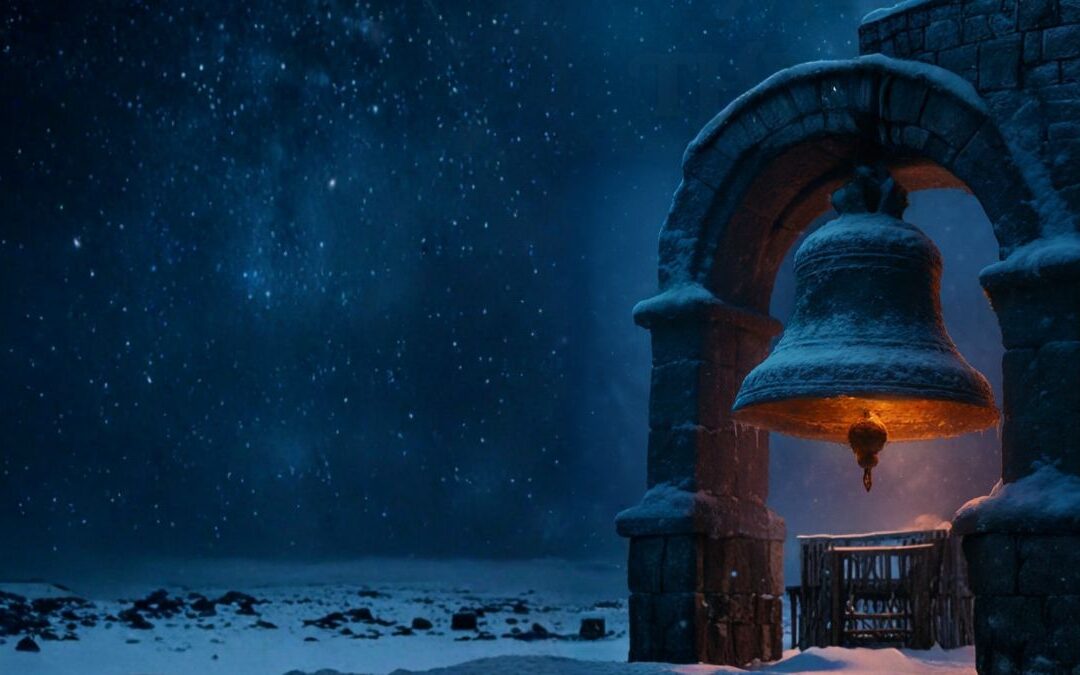- The Gist
- The Pacific Ring of Fire: A Ring of Natural Disasters
- What Is the Pacific Ring of Fire?
- Why Does the Ring of Fire Have So Many Volcanoes?
- Earthquakes: The Ring of Fire’s Frequent Shakes
- Tsunamis: The Ring of Fire’s Underwater Threat
- The Ring of Fire and Human Impact
- The Science of Studying the Ring of Fire
- Preparing for Disasters in the Ring of Fire
- A Powerful Force of Nature
- Let’s Talk
- Let’s Learn Vocabulary in Context
The Gist
Stretching across the Pacific Ocean, the Ring of Fire is an awe-inspiring yet dangerous zone where tectonic plates constantly shift, triggering earthquakes, volcanic eruptions, and even tsunamis. With over 75% of the world’s active volcanoes and 90% of its earthquakes occurring here, the Ring of Fire is a fascinating hotspot of geological activity. But what causes this intense concentration of natural disasters, and why does it make the surrounding areas both hazardous and unique? That’s just the gist of what this post is about. If you want to dig deeper into the topic, some discussions about it, and learn some key vocabulary from its context, read the post.
The Pacific Ring of Fire: A Ring of Natural Disasters
The Pacific Ring of Fire is a vast, horseshoe-shaped area around the edges of the Pacific Ocean, known as one of the most geologically active regions on Earth. This area, which stretches for about 25,000 miles, is marked by frequent earthquakes, volcanic eruptions, and other seismic activity. From the coasts of South America, up through North America, across to Japan, and down to New Zealand, the Ring of Fire is home to around 452 volcanoes and countless tectonic fault lines that make it both a spectacle of natural beauty and a region prone to disasters. Let’s dive into the science behind the Ring of Fire and why this region experiences such intense activity.
What Is the Pacific Ring of Fire?
The Ring of Fire gets its name from the numerous active volcanoes that form a fiery loop around the Pacific Ocean. This region lies on the boundaries of several major tectonic plates, including the Pacific, North American, Eurasian, and Philippine plates. Because of the constant movement and interaction of these plates, the Ring of Fire experiences intense seismic activity.
Tectonic plates are massive slabs of Earth’s crust that float on the semi-fluid mantle beneath. These plates constantly move, sometimes sliding past one another, sometimes colliding, and sometimes one plate slides under another in a process known as subduction. This movement creates friction and pressure that, when released, results in earthquakes and volcanic eruptions. In the Ring of Fire, this process is particularly intense, which is why the region is prone to natural disasters.
Why Does the Ring of Fire Have So Many Volcanoes?
Volcanoes are common in the Ring of Fire because of the subduction zones—areas where one tectonic plate slides under another. As one plate moves beneath another, it melts in the Earth’s mantle, creating magma. This magma then rises toward the surface, leading to volcanic eruptions. Mount St. Helens in the United States, Mount Fuji in Japan, and Mount Pinatubo in the Philippines are all famous volcanoes within the Ring of Fire. Some eruptions have been mild, while others have been catastrophic, with impacts on climate and nearby populations.
In addition to these larger volcanic eruptions, the Ring of Fire is also known for producing smaller volcanic activity, with gases and molten rock occasionally escaping through vents in the Earth’s crust. This constant activity makes the Ring of Fire a significant contributor to the formation of new land, as volcanic eruptions create islands and change landscapes over time.
Earthquakes: The Ring of Fire’s Frequent Shakes
The Ring of Fire is also the most earthquake-prone region on Earth. Approximately 90% of the world’s earthquakes occur here, with many of them classified as major or even devastating. The movement of tectonic plates creates faults—cracks in the Earth’s crust where earthquakes often originate. When the pressure between these plates becomes too great, it releases energy in the form of an earthquake.
A well-known example is the San Andreas Fault in California, which lies along the boundary between the Pacific and North American plates. This fault is responsible for many earthquakes in California, including those that have caused significant destruction. Japan, also located along the Ring of Fire, is another area frequently impacted by earthquakes. In 2011, a powerful earthquake off Japan’s coast triggered a massive tsunami, causing widespread damage and the Fukushima nuclear disaster.
Tsunamis: The Ring of Fire’s Underwater Threat
Earthquakes along the Ring of Fire don’t just impact land; they can also trigger tsunamis. Tsunamis are massive sea waves caused by sudden movements on the ocean floor, often the result of underwater earthquakes or volcanic eruptions. When tectonic plates shift below the ocean, they displace large amounts of water, sending waves across vast distances. These waves can reach coastal areas with little warning and have devastating effects.
The 2004 Indian Ocean earthquake, while outside the Ring of Fire, serves as a reminder of the potential impact of undersea earthquakes. In the Ring of Fire, coastal areas like Japan, the Philippines, and Indonesia are especially vulnerable to tsunamis because of the region’s seismic activity. Scientists continuously monitor seismic and ocean activity to detect early warning signs of tsunamis, as these events can cause catastrophic loss of life and property.
The Ring of Fire and Human Impact
Living near the Ring of Fire presents unique challenges and opportunities. On one hand, the frequent natural disasters pose significant risks to human lives, property, and infrastructure. Countries in the Ring of Fire must invest in earthquake-resistant buildings, tsunami warning systems, and disaster preparedness programs. Japan, for example, has highly advanced earthquake warning systems and strict building codes to minimize damage.
On the other hand, volcanic eruptions in the Ring of Fire also provide fertile soil, rich in minerals from volcanic ash, which is ideal for agriculture. For many countries in this region, the benefits of living near volcanic soil, which supports abundant crops, outweigh the risks. Additionally, volcanic activity provides geothermal energy, a renewable resource that countries like Iceland and Japan have harnessed to power homes and industries.
The Science of Studying the Ring of Fire
The Ring of Fire is an area of intense study for geologists and scientists who seek to understand Earth’s internal processes. Advances in seismology, the study of earthquakes, have led to better monitoring of tectonic activity, helping scientists predict potential earthquakes and volcanic eruptions. Although exact predictions remain challenging, scientists use tools like GPS and seismographs to track plate movement and measure ground deformation near fault lines and volcanoes.
Seismologists and volcanologists study the Ring of Fire to gain insights into plate tectonics, a field that explains much of Earth’s geological activity. By studying the movement of plates and the conditions leading to seismic events, scientists hope to develop more effective ways to anticipate natural disasters and minimize their impact on human populations.
Preparing for Disasters in the Ring of Fire
For the millions of people who live along the Ring of Fire, disaster preparedness is a critical part of life. Earthquake drills, tsunami evacuation routes, and emergency kits are common in places like Japan, Chile, and the west coast of the United States. Schools, workplaces, and communities frequently hold drills to ensure that people know what to do in the event of an earthquake or tsunami.
Countries along the Ring of Fire also cooperate internationally to improve disaster response and share scientific knowledge. For example, Japan’s earthquake-resistant building technology has been adapted in other earthquake-prone regions to reduce structural damage and protect lives. These preparedness measures help mitigate the impact of natural disasters, even if they cannot entirely eliminate the risks.
A Powerful Force of Nature
The Pacific Ring of Fire is one of Earth’s most dynamic and dangerous regions, where the forces of plate tectonics shape the landscape and create both beauty and destruction. This vast zone of seismic activity teaches us about the power of nature and the resilience required to live in its path. From volcanic eruptions and earthquakes to tsunamis, the Ring of Fire remains a reminder of our planet’s constant evolution. It’s a place where natural disasters are a part of life, but it also highlights human innovation and adaptability. As scientists continue to study this region, we gain valuable insights into how our world works—and how we can better prepare for its challenges.
Let’s Talk
The Pacific Ring of Fire—just hearing the name brings to mind images of volcanoes erupting, earthquakes shaking, and tsunamis crashing onto shores. It’s a zone that’s both fascinating and, let’s be honest, a bit terrifying. Imagine living somewhere where the ground shaking or a mountain suddenly spouting lava is just part of life. For millions of people, that’s exactly the reality. But here’s something to think about: what is it about this region that makes it such a hotspot for natural disasters? It’s all about the tectonic plates, these enormous chunks of Earth’s crust that are constantly shifting, bumping, and grinding against each other. It sounds like something out of a slow-motion action movie, right?
There’s also a strange resilience in communities living along the Ring of Fire. Think about places like Japan, which is practically a masterclass in earthquake preparation. They’ve turned disaster preparedness into a way of life, with earthquake drills, advanced warning systems, and even specialized buildings designed to sway with the ground instead of collapsing. In a way, it’s inspiring to see how people adapt to what nature throws at them. And maybe there’s a lesson in that for all of us—even if we’re not dealing with volcanoes or tsunamis every day, we all have to handle unexpected “quakes” in life.
And speaking of adapting, volcanic soil is another cool side to this story. Sure, volcanoes can be dangerous, but they also produce some of the richest, most fertile soil on the planet. For farmers in these regions, that volcanic ash is like a secret ingredient for amazing crops. It’s a classic case of “taking the good with the bad,” wouldn’t you say? So, here’s a question: if you had the chance, would you live near a volcano or fault line, knowing the risk but also the benefits? It’s one of those trade-offs that really makes you think about how we coexist with nature.
Ultimately, the Ring of Fire is a reminder of how powerful Earth really is. It’s a place where you can literally see the planet’s forces in action. And while we’re getting better at predicting and preparing for these natural events, there’s still so much to learn. But maybe that’s part of what makes the Ring of Fire so intriguing—knowing that even with all our technology, Earth’s most powerful forces still have the upper hand.
Let’s Learn Vocabulary in Context
Let’s explore some key terms that really bring the Pacific Ring of Fire to life. First up, tectonic plates. These are massive slabs of Earth’s crust that float around on top of the mantle. When they move, they cause all kinds of natural events, like earthquakes and volcanoes. Think of them as giant puzzle pieces that don’t quite fit together perfectly, always shifting and causing a bit of chaos.
Then there’s seismic activity. This term covers any kind of shaking or movement in the Earth’s crust, from small tremors to massive earthquakes. If someone tells you there’s been “seismic activity,” you know something’s moving deep underground. You can even use it figuratively, like saying a new idea has caused “seismic changes” in an organization.
Subduction is an interesting one. This is when one tectonic plate slides under another, creating pressure and heat that often lead to volcanic eruptions. Subduction zones are some of the most active areas in the Ring of Fire, where Earth’s crust basically recycles itself. It sounds like something from a sci-fi movie, but it’s just part of how our planet works.
Next, let’s look at volcanic eruption. We all know what it is, but think of it as Earth’s release valve. When pressure builds up underground, it finds a way out—usually through a volcano. The lava, ash, and gases from an eruption are intense, and while we usually only hear about the destruction, volcanic eruptions also add new land and enrich soil.
Speaking of which, lava is the molten rock that flows from a volcano during an eruption. While dangerous, it cools down to form new rock and, over time, can create fertile land. In everyday language, we might say something “spills like lava,” capturing that unstoppable, powerful flow.
Fault lines are cracks in Earth’s crust where two tectonic plates meet. This is where earthquakes often happen, and they’re all over the Ring of Fire. Living near a fault line means being in an area with lots of tectonic action, and while it can be risky, people do it every day. It’s like living near the “seams” of the planet.
Then we have tsunami, which is a massive sea wave usually caused by an undersea earthquake or volcanic eruption. These waves can travel great distances and hit coastlines with devastating force. They’re powerful reminders of how interconnected land and sea really are.
Geothermal energy comes from heat stored within Earth, often near volcanic regions. The Ring of Fire is full of geothermal resources, which places like Iceland and Japan use to produce electricity. It’s a clean, renewable source of energy that harnesses Earth’s natural heat.
Another important term is eruption. We usually think of volcanoes, but you can use eruption to describe anything that bursts out suddenly, like laughter, applause, or even emotion. Just like a volcano, an eruption is about something breaking free.
Finally, seismograph is a tool that measures the strength and duration of earthquakes. Scientists rely on seismographs to understand and monitor Earth’s movements, especially in high-risk areas like the Ring of Fire. Think of it as the Earth’s “heartbeat” monitor, keeping track of those underground tremors.
So, here’s something to ponder: Which of these words do you think captures the power of the Ring of Fire best? And if you could choose just one natural event to witness—safely, of course—would you pick an earthquake, a volcano, or maybe even a tsunami?










0 Comments